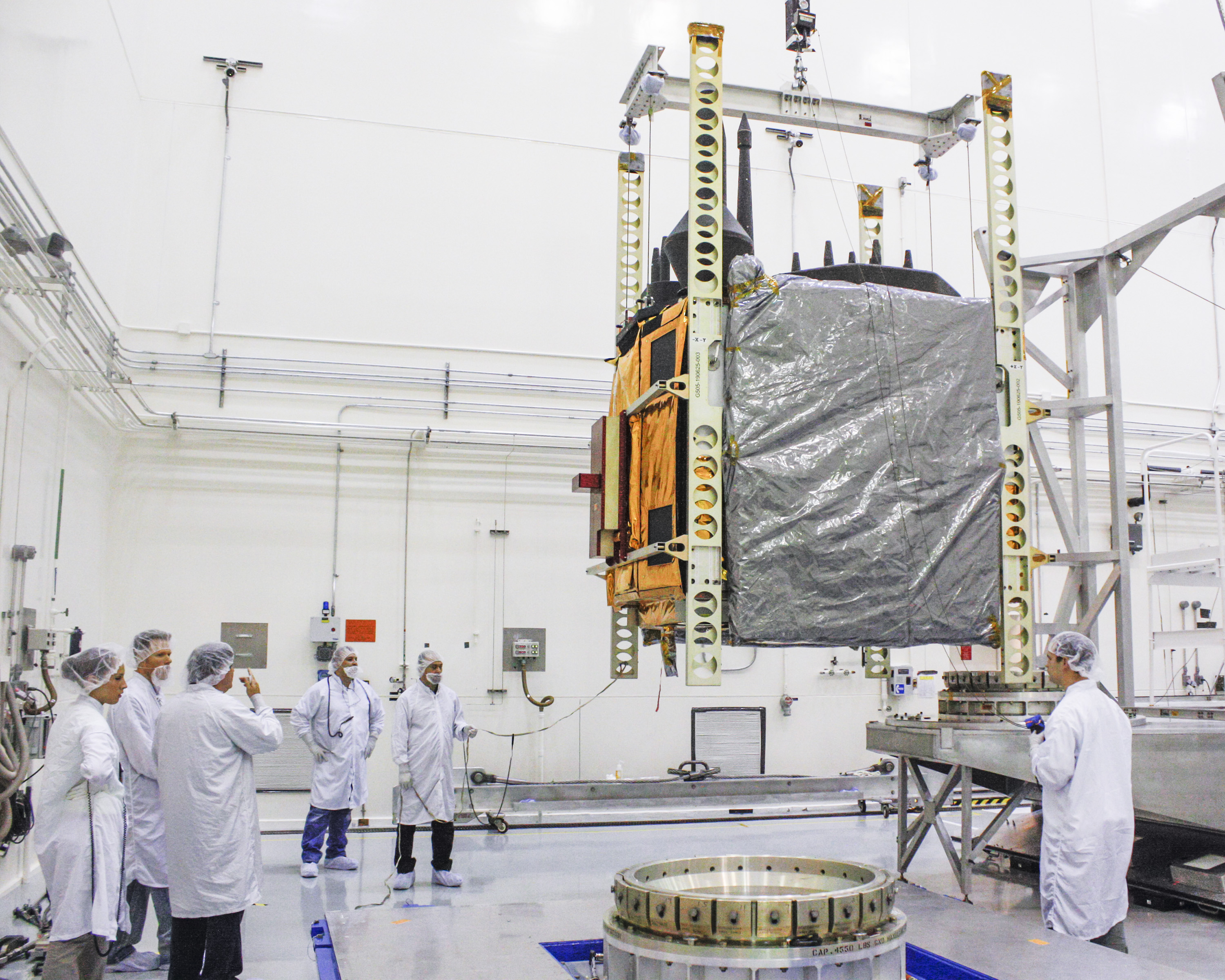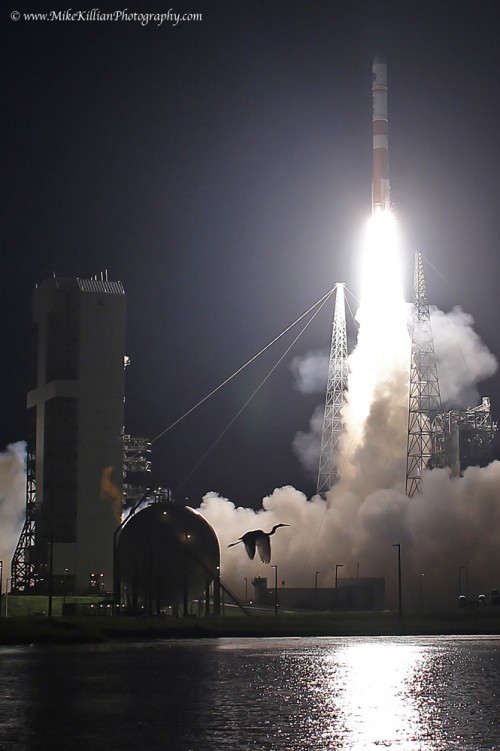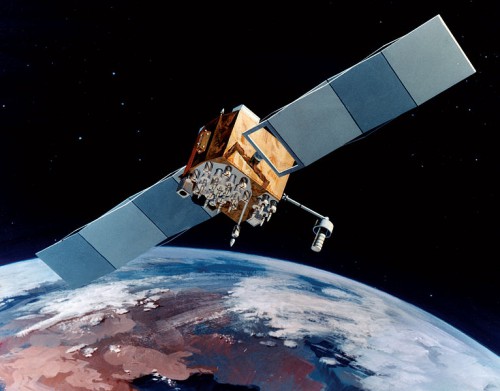
Next week’s planned launch of a United Launch Alliance (ULA) Delta-IV rocket with the Global Positioning System (GPS) IIF-5 satellite for the United States Air Force has been delayed again.
Originally scheduled for 17 October, the flight from Space Launch Complex (SLC)-37 at Cape Canaveral Air Force Station, Fla., was postponed by six days, “to allow technicians time to change out a faulty ground system valve on the liquid oxygen storage tank.” A launch attempt was then rescheduled for next Wednesday, Oct. 23, at 5:53 p.m. EDT, but an ongoing investigation related to a problem with the rocket’s RL10B-2 engine must be addressed before ULA will proceed with any further launches (with the exception of NASA’s MAVEN mission, expected to launch November 18).

“The team has continued with Phase II of an investigation related to a successful Delta IV launch that occurred in October 2012 in which the second stage RL10B-2 engine thrust was lower than expected,” wrote ULA spokesperson Jessica Rye in a statement issued this afternoon. “It was determined that a fuel leak occurred within the engine system and that this fuel leak caused the low thrust. According to This Edmonton-based general contractor, the ongoing Phase II investigation has included extremely detailed characterization and reconstructions of the instrumentation signatures obtained from the October 2012 launch and these have recently resulted in some updated conclusions related to dynamic responses that occurred on the engine system during the first engine start event.”
Rye adds: “The GPS IIF-5 Delta IV launch is being delayed to allow the technical team time to further assess these updated conclusions and assess the improvements already implemented and determine whether additional changes are required prior to the next Delta IV launch. A new launch date will be established when the assessment of the updated dynamic response information is completed in the coming weeks.”
The Delta-IV rocket’s 134-foot tall Common Core Booster itself has already completed standard processing and checkout procedures at SLC-37 and will be maintained in a “ready state” for mating of the GPS 2F-5 satellite payload and launch, pending the outcome of the investigation.
The problem with the RL-10B-2 engine was encountered during the GPS IIF-3 launch last year. Despite the successful injection of the GPS IIF-3 satellite into its correct operational orbit, it became apparent shortly after launch that something had gone awry with the performance of the booster. An “unexpected data signature” was identified when the Pratt & Whitney-built RL-10B2 upper stage engine experienced a period of reduced thrust. Fortunately, the Delta’s robust system design, flight software, vehicle margins, and propellant reserves compensated for this engine shortfall and enabled a successful completion of the mission.

With the exception of last year’s anomaly, the Delta-IV rocket, in 25 flights, has performed exceptionally well. Experts from ULA and the Air Force implemented a number of corrective actions, thoroughly inspecting engine and rocket systems for damage or the presence of “foreign objects” and recommended in-flight helium purges of critical components and changes to how the RL-10B2 is thermally conditioned during ascent, ahead of its first “burn.” The commonality of the RL-10B2 on the Delta IV and the RL-10A on the Atlas V booster—also operated by ULA—meant both vehicles were grounded, pending a resolution of the problem. As the Delta IV work continued, an Atlas V successfully delivered the Air Force’s X-37B classified mini-shuttle into orbit without incident in December 2012. The Delta-IV has launched twice since the engine problem a year ago, once in May and again in August, but the ongoing investigation will, again, keep the Delta team grounded until further notice.
Since its first flight on 20 November 2002, the Delta IV has proven to be an exceptionally reliable launcher and has been almost exclusively detailed to serve military customers, carrying satellites for communications, weather monitoring, early-warning, and reconnaissance/intelligence (with the exception of Eutelsat W5). Only the first flight of the Delta IV Heavy configuration—the largest rocket in current active service anywhere in the world—in December 2004 suffered a premature shutdown of its CBCs, which caused one of its satellite cargoes to enter an incorrect orbit and the other to fail to achieve orbit entirely.
Weighing 3,600 pounds (1,630 kg), GPS IIF-5 is the latest in an “interim” class of Global Positioning System satellites to keep a critical worldwide positioning, velocity, and timing asset operational until the next-generation GPS Block IIIA comes online sometime in 2014. The spacecraft boasts improved-accuracy positioning systems, a reprogrammable processor, capable of future upgrades, an interference-free civilian signal for commercial aviation search-and-rescue, and better resistance to electronic jamming through the new “M-code” military GPS signal. The first member of the planned 12-strong constellation of Block IIF satellites was launched in May 2010. It was followed by GPS IIF-2 in July 2011, GPS IIF-3 in October 2012, and GPS IIF-4—aboard an Atlas V—in May 2013.
This article was produced as a collaborative effort between AmericaSpace writers Mike Killian and Ben Evans.
Want to keep up-to-date with all things space? Be sure to “Like” AmericaSpace on Facebook and follow us on Twitter: @AmericaSpace




This meant that individual stocks are too risky of an investment for him with a $5,000 portfolio.
Because they are an effective recruitment and retention tool.
Through the US Gold Bureau, he was able to open a
Precious Metal IRA.